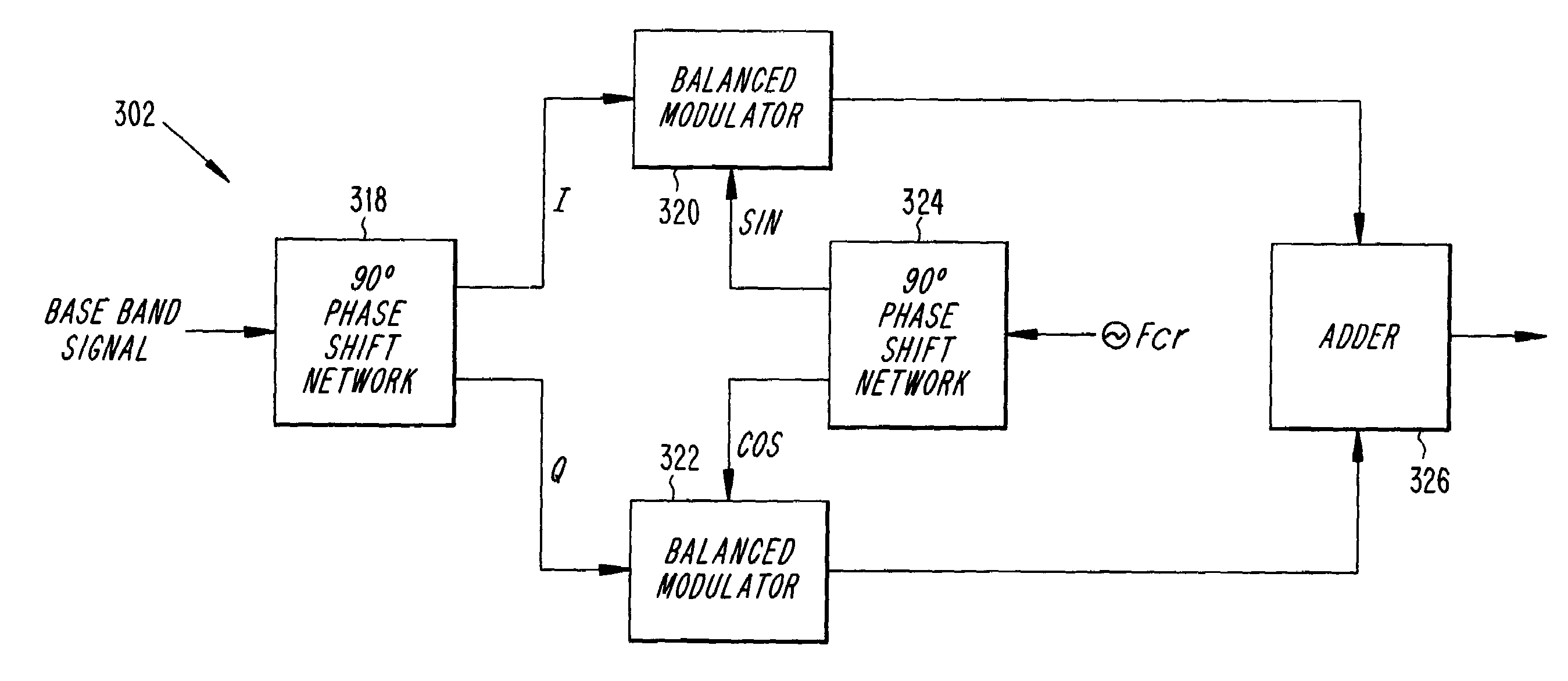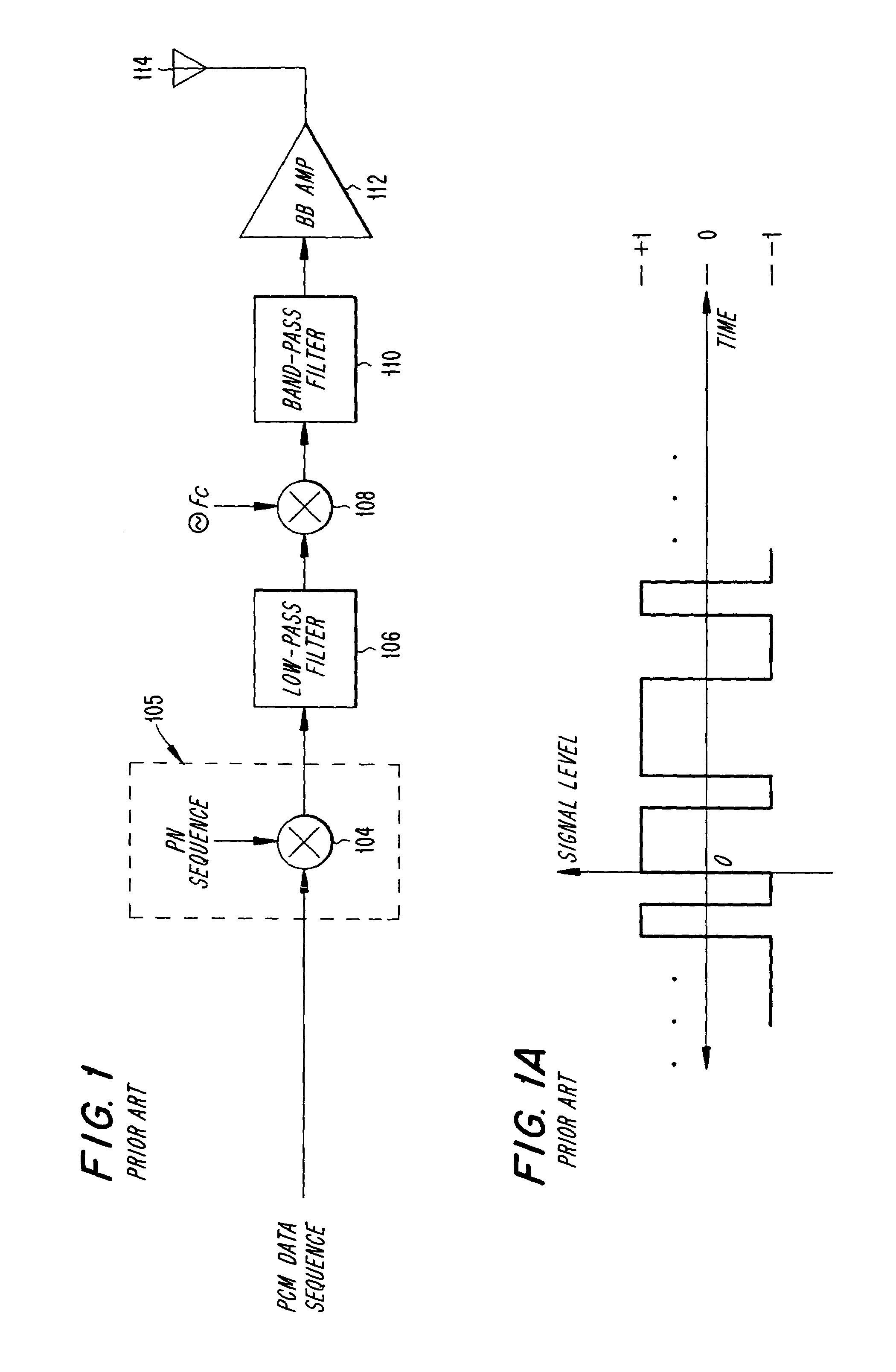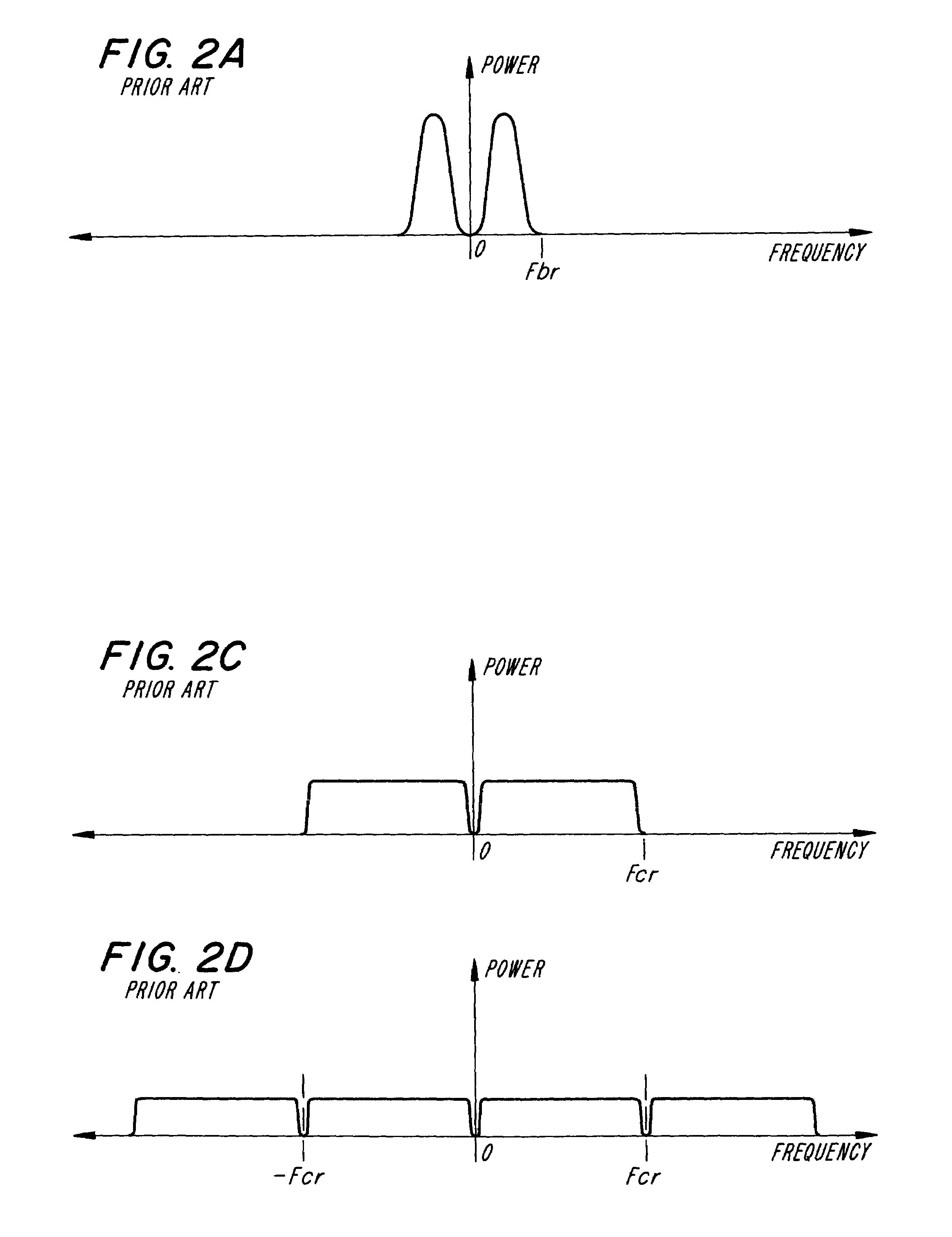Noise shaping technique for spread spectrum communications
- Summary
- Abstract
- Description
- Claims
- Application Information
AI Technical Summary
Benefits of technology
Problems solved by technology
Method used
Image
Examples
Embodiment Construction
[0033]FIG. 1 shows a typical prior art spread spectrum transmitter. At the left-hand side of FIG. 1, a baseband, pulse coded modulated signal, typically a 32 kilobit per second Adaptive Pulse Code Modulated (ADPCM) speech signal, is applied to the left-hand terminal of mixer 104, which is shown contained within spread spectrum encoder 105. More information about the use and characteristics of spread spectrum encoders may be found in Taub, op. cit., pages 721–727. A pseudonoise (PN) sequence (FIG. 1A) is applied to the upper terminal of mixer 104. Mixer 104 thereby performs a frequency spectrum spreading function by multiplying the PCM data sequence by the PN sequence in the time domain, which is equivalent to convolving the bimodal spectrum of the data sequence with the approximately rectangular spectrum of the PN sequence in the frequency domain. The output of mixer 104 is applied to low-pass filter 106, whose cutoff frequency is equal to the system chip rate, Fcr. The output of fi...
PUM
 Login to View More
Login to View More Abstract
Description
Claims
Application Information
 Login to View More
Login to View More - R&D
- Intellectual Property
- Life Sciences
- Materials
- Tech Scout
- Unparalleled Data Quality
- Higher Quality Content
- 60% Fewer Hallucinations
Browse by: Latest US Patents, China's latest patents, Technical Efficacy Thesaurus, Application Domain, Technology Topic, Popular Technical Reports.
© 2025 PatSnap. All rights reserved.Legal|Privacy policy|Modern Slavery Act Transparency Statement|Sitemap|About US| Contact US: help@patsnap.com



